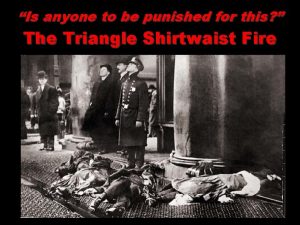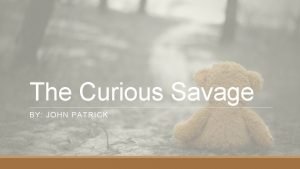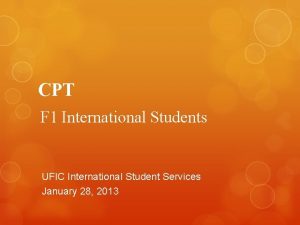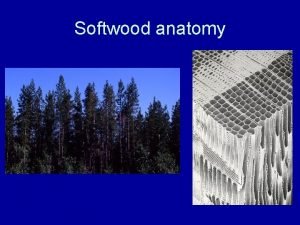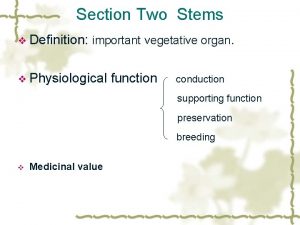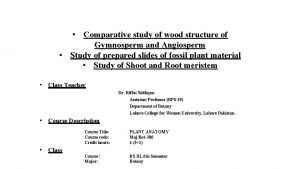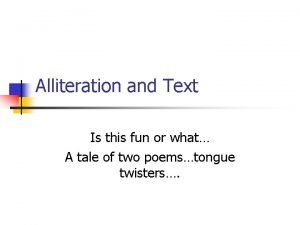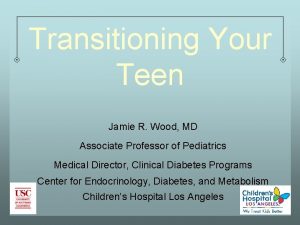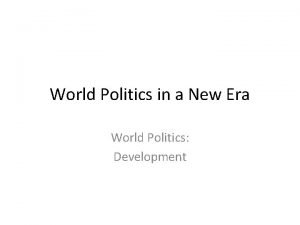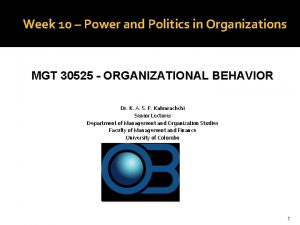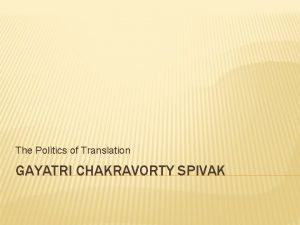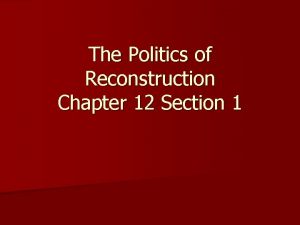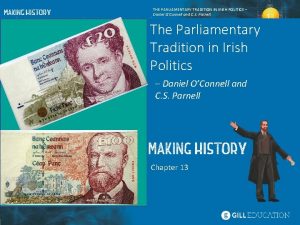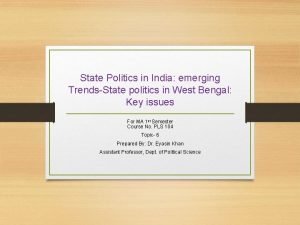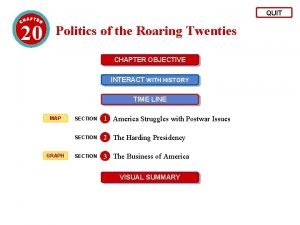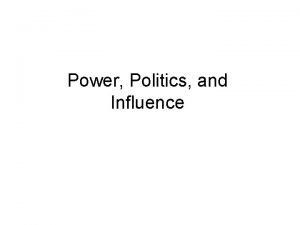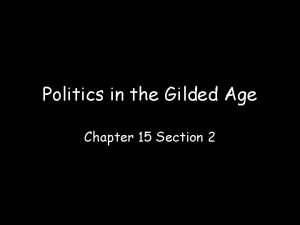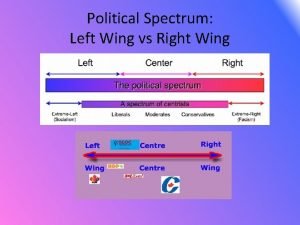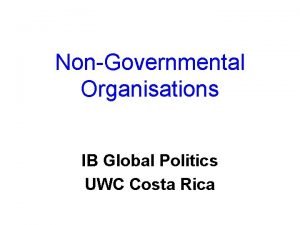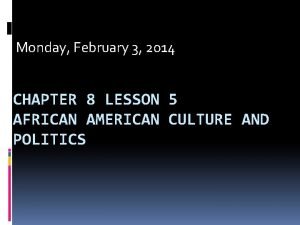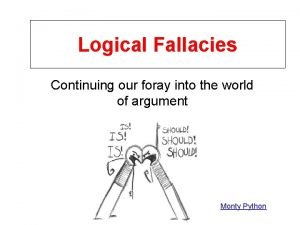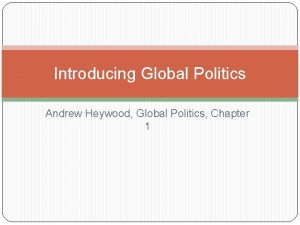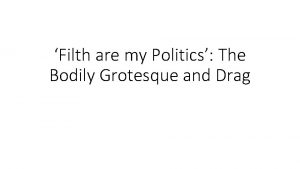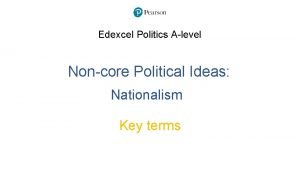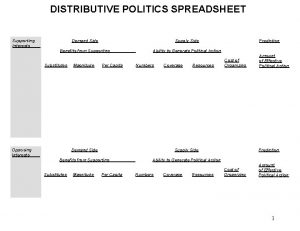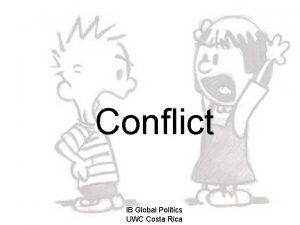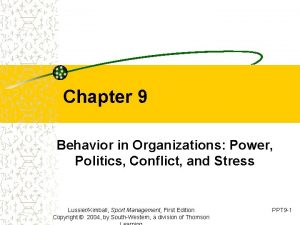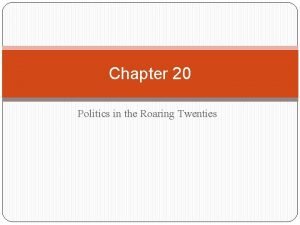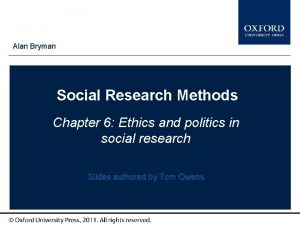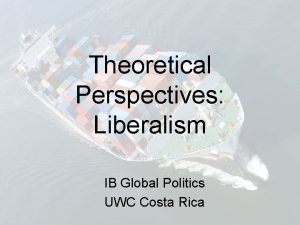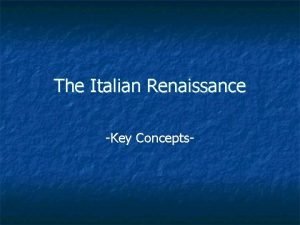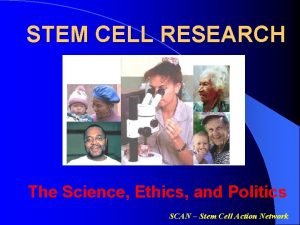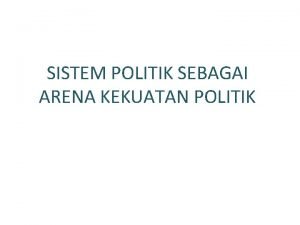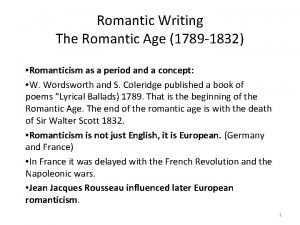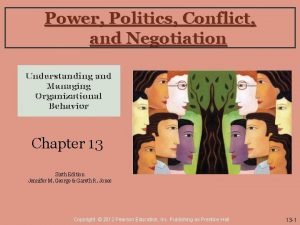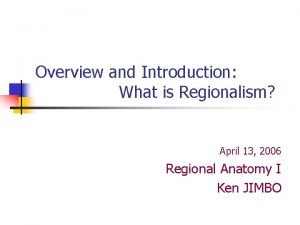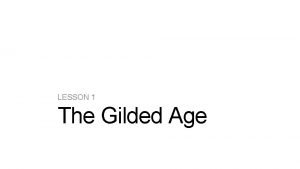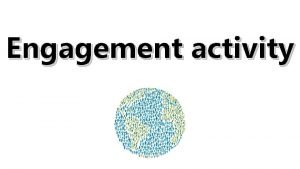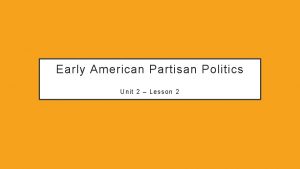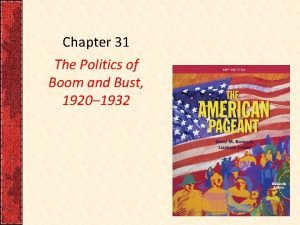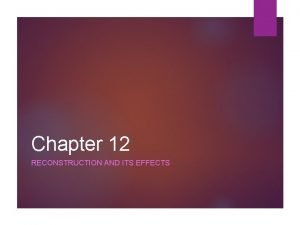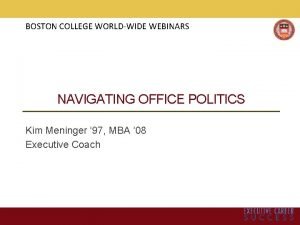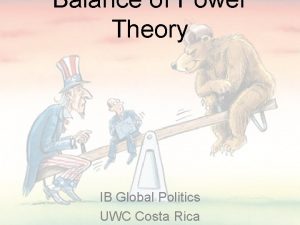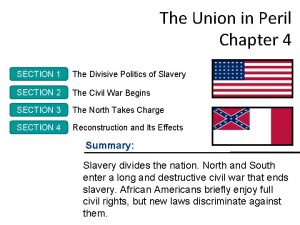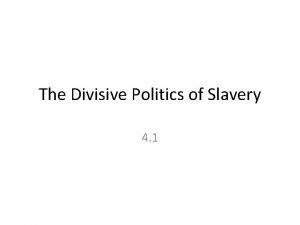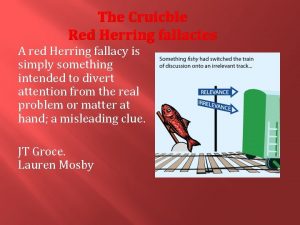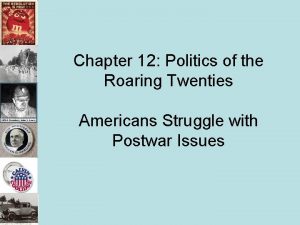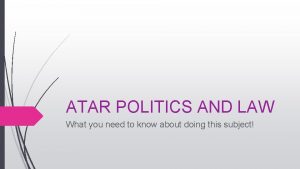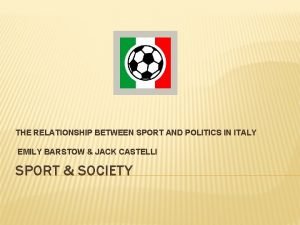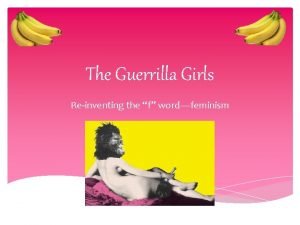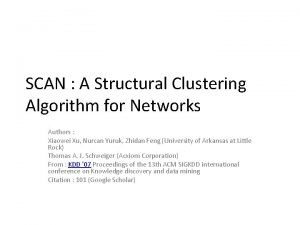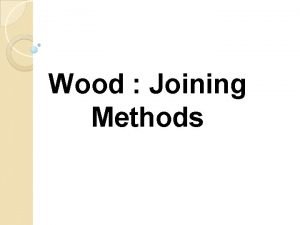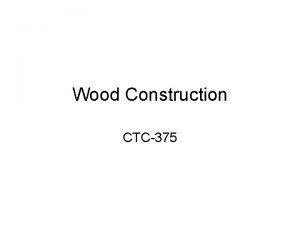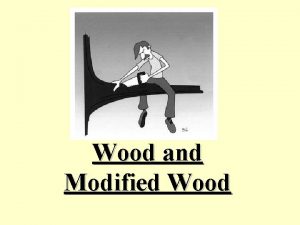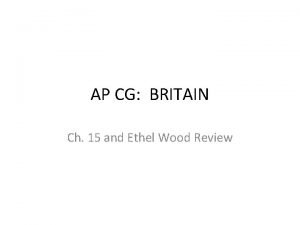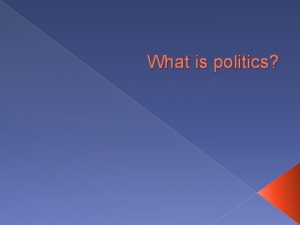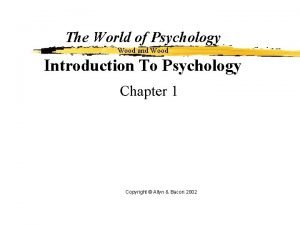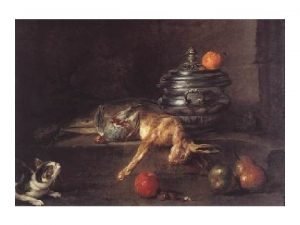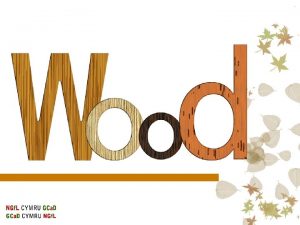Politics in China INTRODUCTION TO CHINA Ethel Wood
































































- Slides: 64

Politics in China


INTRODUCTION TO CHINA Ethel Wood

Why China? • China is a capitalistic communist country! – Say what? • It did a SINGLE TRANSITION…just economic— will it lead to political change? It always has… • Authoritarian, one party state • Most important economy in the world • Twilight zone…parallel universe – Party and Government Structure

Overview: The Big Picture • • • System of Government: Authoritarian Single Party Rule Distribution of Power: Unitary System Electoral System: Is there one? Authoritarian One Party Constitution: 1982 Legislature: Unicameral Current Head of Party and State: President Hu Jintao Head of Government: Prime Minister Wen Jiabao Current Ruling Party: Communist Party Major Political Parties: …. .

You Must Remember: • Communist China is only 60 years old…young • China has had 4000 years of authortarian rule! • Communism is a perfect fit for authoritarian historical tradition. • China is only half communist—politically • Economically China is a free market freak – Problems will arise with rule of law…a free market system MUST have rule of law.

OUTCOME: • End of communist rule? – Industrialization always undermines authoritarian rule. • China becomes next great super power? –Spain to England to US to China?

Historical Traditions • Authoritarian Power • Confucianism • Bureaucratic Hierarchy based on scholarship • The “Middle Kingdom” • Communist Ideologies

POLITICAL CULTURE The Chinese Mind

IMPORTANCE OF GEOGRAPHY Horseshoe Theory of Chinese Isolation

Political Culture: The Chinese Mind 1. 2. 3. Dynastic Rule for 4, 000 YEARS – Taoism: Inner Peace – Confucianism: Social harmony based appropriate behavior within hierarchy. Resistance to Imperialism – 19 th Century to 1911 Revolution Maoism 1949 – Strongly influenced by Marx and Lenin but his version of communism was distinctly Chinese – Whereas Lenin emphasized the importance of the party vanguard to lead people to revolution and beyond, Mao resisted the inequity implied by Lenin’s beliefs

Political Culture: The Chinese Mind – Mao believed in the strength of the peasant, and center his philosophy on these ideals: • Collectivism • Struggle and Activism • Mass Line • Egalitarianism • Self Reliance

Political Culture: The Chinese Mind • Collectivism – Valuing the good of the community above that of the individual – Cool with peasants, contrary beliefs of scholars (old culture) drawn by individualism • Struggle and Activism – Mao encouraged people to actively pursue the values of socialism—something that would require struggle and devotion • Mass Line – Two way street of communication between people and gov’t. – Required teaching and listening on everyone’s part – Leaders would communicate their will and the direction to the people, but the people in turn would communicate through the mass line their wisdoms to leaders

Political Culture: The Chinese Mind • Egalitarianism – Hierarchy was the key organizing principle before 1949—Confucianism – Mao’s emphasis on creating an egalitarian society was in complete opposition to it • Self-Reliance – Instead of relying on the elite to give directions, people under Maoist rule were encouraged to rely on their own talents to contribute to their communities

Political Culture: The Chinese Mind 4. Deng Xiaoping Theory 1978 -1997 – “It doesn’t matter whether a cat is white or black, as long as it catches mice. ” • 1962 statement reflects Deng’s practical approach to solving China’s problems – In other words, he didn’t worry too much about whether a policy was capitalist or socialist as long as it improved the economy. – So……as long as he (they) they stayed in power, so what…. – Ahh, so it’s all about power…imagine that from a politician.

Political Culture: The Chinese Mind 4. Deng Xiaoping Theory 1978 -1997 – The result of his leadership was a dramatic turnaround of the Chinese economy through a combination of socialist planning and the capitalist free market – His political and social views remained true to communist tradition—the party should supervise all, and no allowance should be made for individual freedoms and/or democracy

Politics in China Current Policy Challenges and Historical Background


CURRENT POLICY CHALLENGES • Political corruption, rural unrest, a growing wealth gap, and severe pollution—all related to economic successes of last 20 years • Chinese leaders agree to be judged on their ability to foster economic growth and deliver a better material life for citizens. • Social safety net gone – “iron rice bowl” gone – Full employment is no longer guaranteed • • • China is member of WTO, which encourages capitalistic reforms “some get rich first”, current government policy wealth is becoming more visible Corruption is a serious problem, especially in the country Villagers rise up against abuses of power

CURRENT POLICY CHALLENGES • While economic liberalization has taken place, the government has firmly suppressed organized challenges to the Communist Party • Handful of leaders at the top monopolize the authority to choose what inputs from what groups are acceptable • The rules of the game are not transparent • Hong Kong—clashes over western oriented population who have enjoyed political rights • Taiwan—political unification • Non-Han minorities, such as the Tibetans, challenge Chinese nationalism

SOCIAL CONDITIONS • Huge population – World’s most populous country – Most live in the countryside, but now that is only 57% compared to 85% in 1980 – Rural industrialization and growth of towns – Rural collective industry is the most dynamic industrial sector • The population is concentrated in the eastern third of the land – – Only ¼ of China’s land is arable Land shortage/reduction in cultivated area Land is used for property borders, burial grounds, and bigger houses. So the problem of feeding the large population is expected to continue • China is a multiethnic state – 92 percent of Chinese are ethnically Han, but there are fifty-five recognized ethnic minorities, ranging in number from a few thousand to more than 16 million. – Tibet and Xinjiang (unrest)

HISTORICAL SETTING • • “Our long history…” Imperial Rule Unique bureaucratic of scholar-officials Confucianism

IMPERIAL RULE TO COMMUNISM • Nationalist Party (KMT) – Formed in the 1920 s with goal of unifying fractured country ruled by warlords • Civil War – Between Nationalists and Communists – Mao Zedong led the Chinese Communist Party (CCP) – Mao and Communists won after World War II • PRC founded in 1949

HISTORY OF PRC • At first China looked to Soviet Union for implementation strategy--FAILED • Created unique directions such as mobilization campaigns through the masses • Soviet Like Structures – – Central bureaucracy of planning agencies Nationalized industry Built collective farms Tolerated no dissent once directives were articulated • Implemented many campaigns to mobilize the mass with compulsory participation • Hundred Flowers Campaign – Example of relaxation of control over dissent, only to be overturned • “Enemies of the state” declarations common and millions were imprisoned or killed • Chinese Soviet Split – 1950 s cooling off period between China and Soviet Union – partially due to Soviet unwillingness to help with Chinese nuclear program

THE GREAT LEAP FORWARD • Great Leap Forward (1958 -1966) was a utopian effort to transform China into a radical egalitarian society. MAINLY ECONOMIC! • Attempt my Mao to free China from Soviet domination • Campaign requested that citizens abandon material rewards and needs for moral reasons • Emphasis was mainly economic, but was based on four principles: – 1. All-around development 2. Mass Mobilization 3. Political Unaminty and Zeal 4. Decentralization. • FAILED: Mao’s efforts ran counter to the traditional political culture (bureucratic centralism), and the people lacked the skills to contribute to industrialization • Failure Lead to Cultural Revolution

RETREAT FROM THE LEAP • The Great Leap Forward led to a human catastrophe • China retreated from Maoist radicalism • Changed the nature of education system to rely on technical expertise and material benefits

CULTURAL REVOLUTION • The Cultural Revolution (1966 -1976) was a much more profound reform in that it encompased political and social change, as well as economic • In short, Mao was embarrassed by failure of The Great Leap Forward (which was mainly economic) so he broadened the scope of reform to political and social, thinking this would solve his lack of support problem. • Important Principles – – – The Ethic of Struggle Mass line Collectivism Egalitarianism Unstinging Service to Society

CULTURAL REVOLUTION • A primary goal of the Cultural Revolution was to remove all vestiges of the old China and its hierarchical bureaucracy and emphasis on equality. • Campaign driven by anti-Western rhetoric--Western material goods were destroyed (he found and enemy) • Citizens were tried for crime of being “capitalist roader” or siding with the West • All Chinese were forced to be involved • Schools were closed as youth were expected to join the movement • FAILED! By late 1960 s the citizens had taken the campaign to new height and the country neared anarchy

CULTURAL REVOLUTION: AFTER • Mao died in 1976 • Gang of Four ruled • Deng Xiaoping Theory! – “It doesn’t matter of the cat is black or white, as long as it catches mice. ” – Retreated from Cultural Revolution – Changed the direction of economic policy in China – Allowed foreign investment (special economic zones) – Privatized industry – Relaxed some of political controls imposed by Mao

THE STRUCTURE OF THE PARTY-STATE Parallel Universelandia

STRUCTURE OF THE PARTY STATE • “Parliamentary System under single party control” • “Nothing really matters but the party” • Design Features – The basis of the idea was that the party’s claim to legitimate rule is not based on representation of the preferences of the majority, but on representation of the “historical best interests” of all people—the idea being that the populace does not know its own best interest, but the party does…. isn’t that brilliant! – Guardianship and Hierarchy • Describes the relationship between Communist Party & society • Representation of “historical best interests”

STRUCTURE OF THE PARTY-STATE – Party Organization • Democratic Centralism – Leninist principle – This means that democracy exists only at the center of decision making, but once a decision is made no dissent is tolerated. – Centralism never sacrificed to democracy • Refers mainly to consultation: opportunities for discussion, criticism, and proposals in party organizations. • There are official government structures in China, but the real power lies with the party – Two Hierarchies, with Party Leadership • Government structures are more or less duplicated at each level of the political system by Communist Party structures • In principle, there is a division of labor between party and gov’t structures • In practice, two perform similar functions with overlapping responsibilities • But with the party being the main policymaker

STRUCTURE OF THE PARTY STATE: KEY POINT THAT MIGHT HELP In both the government and Communist Party hierarchy, while the formal power of the structure is directly proportional to size, actual impact on policy is inversely proportional to size. –The bigger size = more formal power –The smaller size = more REAL power



STRUCTURE OF THE PARTY STATE: GOVERNMENT STRUCTURES • National People’s Congress (NPC): Legislative Functions – Elected for five-year terms by delegates in provincial-level congresses and the armed forces – Assemble once annually for a plenary session of about two weeks – Always large body – Formally has extensive powers: amendment of the constitution, passage and amendment of legislation, approval of economic plans, etc. – Is it a rubber-stamp assembly? Was during Maoist years, but now…. – It is still too large and meets too infrequently, but the lawmaking role of the less cumbersome NPC Standing Committee seems to be gaining.

STRUCTURE OF THE PARTY STATE: GOVERNMENT STRUCTURES • NPC Standing Committee – When NPC is not in session (almost all the time), the NPC Standing Committee serves as working legislative assembly – 150 members, all reside in Beijing – Meets regularly throughout year – Exercises most formal powers of NPC and prepares agenda for annual NPC plenary sessions.

STRUCTURE OF THE PARTY STATE: GOVERNMENT STRUCTURES • State Council: Executive Functions – Think… “Cabinet”…. or……“Government” – In lawmaking, State Council is center of gov’t activity – Composed the premier, who is head of government, and his cabinet of vice-premiers, state councillors, ministers, auditor general, and secretary general – State Council Standing Committee, which meets twice weekly – As in most parliamentary systems, the bulk of legislation is drafted by specialized ministries and commissions under the direction of the cabinet – President- Head of State – purely ceremonial office

STRUCTURE OF THE PARTY STATE: GOVERNMENT STRUCTURES • Judiciary: – Supreme People’s Court – Supreme People’s Procuratorate • Bridge between public security agencies and the courts • Communist Party Leadership – The Communist Party exercises direct leadership over government and legislative functions in a variety of ways – Read 262 -263 – In short, the Chinese system is executive-led government, but with an important difference having to do with the Communist Government.

STRUCTURE OF THE PARTY STATE: PARTY STRUCTURES • REMEMBER: As in the government hierarchy, while formal power of the Communist Party structures is directly proportional to size, actual impact on policy is inversely proportional to size. – The bigger the size the more formal power – The smaller the size the more REAL power • National Party Congress – According to constitution supreme authority is vested in this body – it is too big and meets to infrequently to play a role in significant policy and decision making – meet once every five years – ratify important changes in broad policy orientation already decided by more important smaller party structures – they elect the central committee

STRUCTURE OF THE PARTY STATE: PARTY STRUCTURES • KEY POINT: – While the Central Committee technically elects the Politburo, Politburo Standing Committee, and the party general secretary, the composition of these structures is determined by party leaders before the party congress, and elections are mainly ceremonial, featuring no candidate choice.

STRUCTURE OF THE PARTY STATE: PARTY STRUCTURES • Central Committee – Exercises power of National Party Congress between sessions – Elected by the National Party Congress – CC elects Politburo, Politburo Standing Committee and party general secretary. – collection of the most powerful several hundred political leaders in the country – Members hold major positions of leadership, as ministers in the state bureaucracy or provincial party leaders. – Membership reflects political power, not confer it – they do not initiate policy but changes in policy or leaders at the political center must be approved by it – they endorse and are responsible to realize party policy

STRUCTURE OF THE PARTY STATE: PARTY STRUCTURES • Politburo – Top political elite, usually no more than a couple dozen leaders – Most have a responsibility for overseeing policy making in some issue area – elected by the Central Committee • Politburo Standing Committee – typically no more than a half- dozen leaders who meet once weekly – core political decision makers in China – selected from the Politburo • General Secretary

STRUCTURE OF THE PARTY STATE: PARTY STRUCTURES • Top Leader and the Succession Problem – Death of leader creates succession problem in most communist countries – There is no formal or generally acknowledged position of second-in-command no regularized mechanism to chose a new top leader. – 1970 s Communist Party elders were reinstated after years of forced retirement under Mao and Cultural Revolution – Central Advisory Commission…bogus new structure for old cronies…dismantled in mid 1990 s • Party Bureaucracy – The Secretariat monitors the bureaucracy and provides a staff for the Politburo to carry out decisions


STRUCTURE OF THE PARTY STATE • People’s Liberation Army (PLA) – Army, Navy, Air Force – PLA – Does not dictate policy to party leaders, but it is the self-appointed guardian of Chinese sovereignty and nationalism. – Preventing Taiwan’s independence – A decade behind Western military technology • Party Dominance – Nomenklatura system • Linchpin of polictical system • The most important mechanism by which the Communist Party exerts control over officials.

Structure of the Party State • Party Membership/Party Core Groups – Vast majority of officials in party structures are CP members – Members obliged to practice the rules of democratic centralism and meet regularly throughout the country – Party core groups are organizations of the most senior party members • Overlapping Directorships – Practice of “wearing two hats” is common – Playing the role of party member and government leader – Used to be more extensive in the past than now

Structure of the Party State • Elite Recruitment – Nomenklatura system is the key to political recruitment – Has changed in recent years – Party has recruited capitalists and has emphasized economic performance as a characteristic to be recruited into the party • Rule by Law – The new Chinese legality acknowledges rule by law, which means that all are equally subject to the law – Debatable if true in practice…Westerners say no, Chinese have renewed emphasis on it for economic purposes

Structure of the Party State • Socialist Legality – Socialist legality rejected the rule of law and criminal legal training stopped. – Began in 1954 as part of first constitution, eventually abandoned – Lawlessness reached a peak during Cultural Revolution • Legal Reform: Began in 1978 – Need was to establish legitimacy by righting past wrongs and establishing public order after years of instability – Goal: encourage economic growth and foreign investment – Established written criminal law – Campaigns launched to educated citizens about the law and equality before the law

STRUCTURE OF THE PARTY STATE • Criticism of Legal Practices – Criticisms abound for its legal system – Punishments viewed as too harsh for crimes – Death penalty used widely – Most prosecutions result in guilty verdicts – Criminal proceedings are inquisitorial, meaning “verdict first, trial second” – Political prisoners! – New legality does constrain the state more than ever

Political Socialization • Mass Media – Ordinary citizens now exposed to news and opinions about public affairs – Hong Kong • Relatively free and critical mass media – Chinese journalists expose government wrongdoings and thwart official efforts to suppress news of disasters. – Chinese leaders reserve the right to shut down publications that in their view go too far. – Internet: 50, 000 cyber police; still difficult to monitor • Education System – Past: very ideological; persecution of scholars – Today: respect for expertise • Fall 2006 reduced the seven compulsory courses on political ideology and party history to four, in the first major curricular change in twenty-five years.

Political Culture • From radicalism to “reform and opening” to the outside world • Political Knowledge – Not uniformly distributed in China – More active knowledge and interest found in men, the more highly educated, and Chinese with higher incomes. – Beijing • Here people discuss politics very frequently • Political Values – Reject every democratic value and support for democratic values generally low – Influence of non-Chinese political socialization is evident – Show an impact of socioeconomic development; urban Chinese are much more supportive of democratic values than are mainland Chinese generally

Political Participation • Changes in the Rules – Political participation: was required; now optional – Mao: mass mobilization campaign; contemporary leadership does not attempt to rouse the mass public to realize policy objectives – Rejection of mass mobilization as the dominant mode of political participation • Rather: express opinions and participate through regular, official channels – hotlines, letters to newspaper editors, etc. • • Local Congress Elections Village Committees Unacceptable Political Participation Protestors and Reformers – Democracy Movement – Tiananmen massacre of June 4, 1989

Interest Articulation and Aggregation • Organizations Under Party Leadership – Satellite parties – Chinese People’s Political Consultative Conference – Important mass organizations • All-China Federation of Trade Unions • Women’s Federation – Mass organizations represent the interests of the Communist Party to the organized “interest groups” it dominates, not vice versa.

Interest Articulation and Aggregation • NGOs – – Nongovernmental organizations Most active in environmental issues Seek embeddedness All-Chinese Women’s Federation: responsible for more than 3, 000 social organizations dealing with women’s issues • GONGOs – Government-organized nongovernmental organizations – Front operations for government agencies – Set up to take advantage of the interest of foreign governments and international NGOs to support the emergence of Chinese civil society. – Most interesting: business associations set up to organize firms • The Self-Employed Laborers Association • The Private Enterprises Association • Federation of Industry and commerce

Policymaking and Implementation • Policymaking – Three tiers in policymaking 1. Politburo and its Standing Committee 2. Leading small groups (LSGs) 3. Relevant party departments and government ministries – From agenda setting to implementing regulations • Five stages: agenda setting; inter-agency review; Politburo approval; NPC review, debate, and passage; and the drafting of implementing regulations • Two most important states: interagency review and drafting of implementing regulations

Policymaking and Implementation • Policy implementation – Monitoring – Policy priorities – Adapting policy to local conditions • Corruption


Policy Performance • Economic Growth – Success story; opening up to foreign trade and investment • Trade balances • Scarcity prices versus government controlled or two-track pricing system – Decentralization – Reform of SOEs • Environmental Degradation – – – Economic growth = serious environmental damage Health and productivity costs “first development, then environment” EPBs local environmental protection bureaus State Environmental Protection Agency (SEPA) • Underfunded

Policy Performance • Population Control – Little regulation during Maoist years; 1978 population close to a billion – One-child family policy State-sponsored family planning added to the constitution Ideal family had one child Most couples required to stop childbearing after one or two births Married couples in urban areas restricted to one child In rural areas, married couples are subject to rules that differ across provinces. In some, two children permitted. In others, only one child permitted; in most provinces, a second child is permitted only if the first is a girl. • Difficult to implement; many sons ideal: a married daughter joins the household of her husband, while a married son remains in the household to support aging parents. • • • Policy implementation – Carrots and sticks utilized to encourage one child policy • Perverse outcomes – Shortage of girls – Sex-selective abortions


Hong Kong • 1842 and 1860, the island of Hong Kong, and adjacent territory on the Chinese mainland, were ceded by treaty to the British in perpetuity. – Due to result of wars fought to impose trade on China – For nearly a century, China was a British colony. • 1984, the Chinese communist authorities elaborated the principle of “one country, two systems” applicable to Hong Kong after 1997 – Hong Kong reverted to Chinese sovereignty in 1997 but would continue to enjoy a “high degree of autonomy. ” – Chinese authorities hope the outcome will woo Taiwan back to the PRC, too.

Taiwan • Governed by the Nationalists as the Republic of China since 1945 – 100 miles off the east coast of the Chinese mainland. – Communist “liberation” of Taiwan – Korean war; American interests in the security of Taiwan • Two major events affected Taiwan’s status – Lost its membership in the U. N. and its seat on the Security Council to China in 1971 – U. S. recognized China diplomatically, downgrading the relationship with Taiwan to one of unofficial liaison • Today fewer than 30 countries recognize Taiwan. • Taiwan’s public does not support unification.

China’s Political Future • Still primarily a communist state – Room for optimism? • The dramatic changes in the Chinese economy, polity, and society, are as much a by-product of reform as a direct product of reform policies. – Room for optimism? • Authoritarianism has not survived intact with economic modernization in many East Asian countries. • Prediction: The party will continue to transform China in the years to come and to transform itself in order to continue to rule.
 Anna easter brown
Anna easter brown Ethel monick
Ethel monick Mrs. ethel p. savage
Mrs. ethel p. savage Ufic advisor
Ufic advisor Cross field pits
Cross field pits V
V Angiosperm wood vs gymnosperm wood
Angiosperm wood vs gymnosperm wood Esau wood poem
Esau wood poem Wood wood teenager
Wood wood teenager World politics in a new era
World politics in a new era Power and politics in organizations
Power and politics in organizations Spivak on translation
Spivak on translation Chapter 12 section 1 the politics of reconstruction
Chapter 12 section 1 the politics of reconstruction Parliamentary tradition
Parliamentary tradition Explain emerging patterns of state politics in india
Explain emerging patterns of state politics in india Politics of the roaring twenties
Politics of the roaring twenties A key part of backstabbing as a political tactic is to
A key part of backstabbing as a political tactic is to Factors contributing to organizational politics
Factors contributing to organizational politics Pendleton civil service act
Pendleton civil service act Left wing and right wing spectrum
Left wing and right wing spectrum Unitary definition
Unitary definition Opportunities of media and information in political
Opportunities of media and information in political Ib global politics costa rica
Ib global politics costa rica Lesson 5 african american culture and politics
Lesson 5 african american culture and politics Bureaucracy and politics in india
Bureaucracy and politics in india Equivocation examples fallacy
Equivocation examples fallacy Andrew heywood global politics
Andrew heywood global politics Filth is my politics
Filth is my politics Nationalism edexcel politics
Nationalism edexcel politics Comparative theories politics a level
Comparative theories politics a level Distributive politics spreadsheet
Distributive politics spreadsheet Ib global politics costa rica
Ib global politics costa rica Power politics and conflict in organizations
Power politics and conflict in organizations Chapter 20 politics of the roaring twenties answer key
Chapter 20 politics of the roaring twenties answer key Ethics and politics in social research bryman
Ethics and politics in social research bryman Uwc global politics
Uwc global politics Italian renaissance politics
Italian renaissance politics Stem cell politics
Stem cell politics Politics as an arena
Politics as an arena Bolton romanticism amp; politics 1789 1832 download
Bolton romanticism amp; politics 1789 1832 download Power, politics and conflict in organizations
Power, politics and conflict in organizations Political spectrum
Political spectrum What is regionalism in politics
What is regionalism in politics Philosophy, politics and economics michael munger
Philosophy, politics and economics michael munger The tournament of today
The tournament of today Engagement activity global politics example
Engagement activity global politics example Lesson 2 partisan politics
Lesson 2 partisan politics Chapter 31 the politics of boom and bust
Chapter 31 the politics of boom and bust Whose government politics populists and progressives
Whose government politics populists and progressives Reconstruction and its effects
Reconstruction and its effects What are politics
What are politics Ib global politics theories
Ib global politics theories Politics and international relations bsc
Politics and international relations bsc Government unit 1 study guide
Government unit 1 study guide Chapter 4 section 1 the divisive politics of slavery
Chapter 4 section 1 the divisive politics of slavery The divisive politics of slavery
The divisive politics of slavery Red herring examples in politics
Red herring examples in politics Chapter 15 section 3 politics in the gilded age
Chapter 15 section 3 politics in the gilded age Doublespeak in politics
Doublespeak in politics Politics of the roaring twenties chapter 12
Politics of the roaring twenties chapter 12 Politics and law atar
Politics and law atar Politics can be defined as
Politics can be defined as Relationship between sports and politics
Relationship between sports and politics Guerrilla girls comic politics of subversion
Guerrilla girls comic politics of subversion Us politics
Us politics

